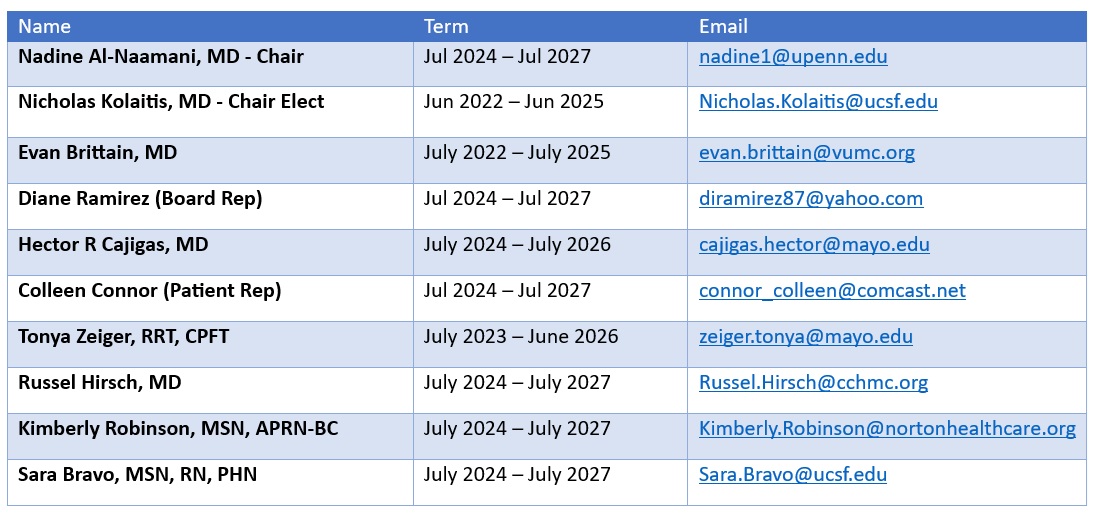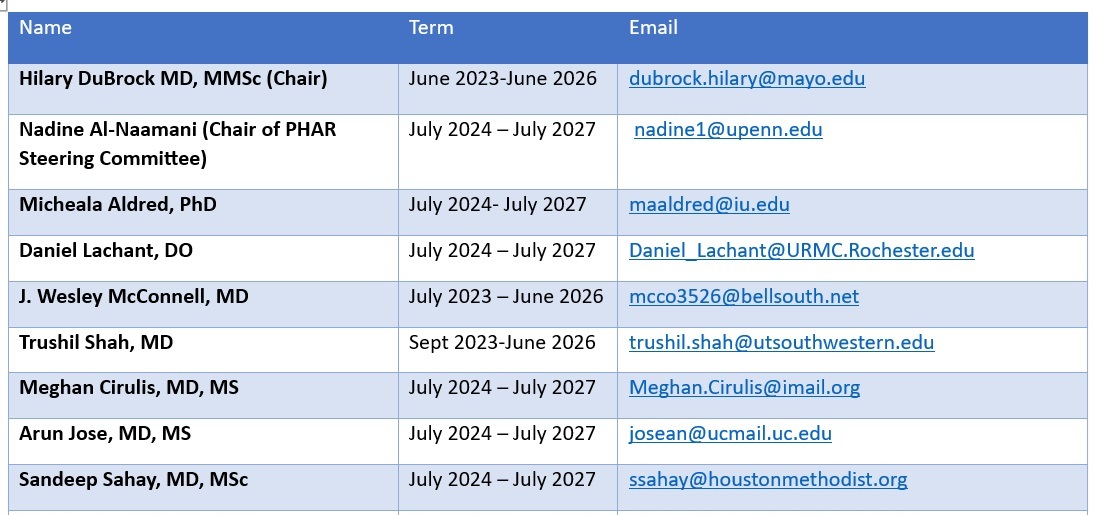About.
Pulmonary Hypertension Association Registry
A patient organization called the Pulmonary Hypertension Association (PHA)
is spearheading the PHA-Accredited PH Care Centers (PHCC) initiative
to accredit centers with special expertise in PH.
The PHCC initiative aims to raise the overall quality of care and improve outcomes
in patients with this life-threatening disease.
A key element of the PHCC initiative is the creation of the
Pulmonary Hypertension Association Registry (PHAR). The PHAR, which began gathering data in 2015,
will collect patient information such as demographics, medical history, diagnostic tests,
medication, and patient-reported quality-of-life. Over time, this information will be used
to measure adherence to diagnostic and treatment guidelines, assess patient outcomes,
improve the quality of care, and facilitate research studies in PAH and CTEPH.
All PHCCs will participate in the PHAR as part of their accreditation.
PHA Registry Steering Committee (PHAR Steering)
The PHAR Steering Committee (PHAR Steering) is tasked with administrative tasks, objectives and directions, legal/ethical decisions,
fulfilling obligations to patients, and satisfying interests of stakeholders.

PHAR Data Access/Publications and Presentations Committee
The Data Access/Publications and Presentation Committee is tasked with ensuring access to the
registry for those in the PH community, defining the process by which investigators access
and perform analyses of data, ensuring the de-identification of data before release, reviewing paper
proposals, and reviewing and approving abstracts and manuscripts before submission for publication.

1 Rotation per PHAR protocol:
"After the official roll-out (>10 centers have collected at least one year of data), the long-term governance plan outlined below will be instituted.
Committee members will serve three-year terms. One-third of the members will rotate off of a given committee yearly
(beginning end of 2017 with new members starting January 2018). Each committee will identify the members rotating
off (volunteers first and then by random selection) and in which order this occurs with the expectation that one-third
of the committee rotates off each year. The staged rotation and term length will balance the continuity that will be
necessary for the long-term success of the registry and in the incorporation of new members who will bring fresh perspective.
Committee members can be reappointed after one year off the committee, however new candidates will be prioritized for selection."